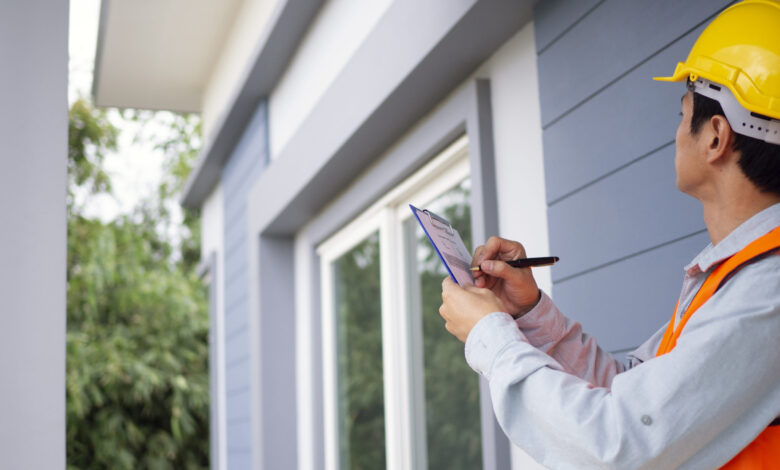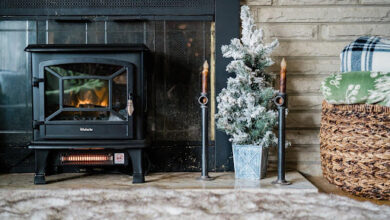8 Residential Inspection Mistakes to Avoid at all Costs
Residential Inspection Mistakes

Buying a house is a significant milestone, often accompanied by a whirlwind of emotions. However, amidst the excitement, prioritizing a thorough residential inspection is crucial. This inspection acts as your eyes and ears, uncovering hidden problems that could translate into hefty repair bills or safety hazards down the road. Yet, even with an inspection planned, overlooking specific areas can leave you vulnerable to unpleasant surprises. Here are four critical aspects where avoiding mistakes can make a world of difference:
1) Neglecting Structural Evaluation
The structural integrity of a home forms its foundation (literally and metaphorically). Skipping a meticulous structural evaluation during a residential inspection is a recipe for trouble. Issues like foundation problems, roof deterioration, or framing deficiencies can pose significant safety risks and lead to expensive repairs. Here’s what a comprehensive structural evaluation should entail:
- Foundation Assessment: Inspectors will thoroughly examine the foundation for cracks, uneven settling, or signs of water damage. They should also consider the foundation type and identify any potential issues related to it, such as bowing basement walls.
- Roof Inspection: A compromised roof is a gateway for leaks, water damage, and even mold growth. The inspector will meticulously examine the roof for missing or damaged shingles, issues with flashing around chimneys and vents, and signs of wear and tear on the roof decking.
- Framing Evaluation: The inspector will visually assess the condition of the home’s framing system, looking for signs of rot, warping, or structural deficiencies that could compromise the home’s stability.
- Door and Window Inspection: Uneven doors or windows can be telltale signs of foundation issues or structural movement. The inspector will check for proper alignment and functionality of all doors and windows.
By ensuring a comprehensive structural evaluation, you gain valuable insight into the overall health of the home, allowing you to identify any potential safety concerns or areas requiring repairs before finalizing the purchase.
2) Skipping Roof Assessment
Your roof is the shield protecting your home from the elements. Unfortunately, a roof in good visual condition doesn’t guarantee its functionality. Skipping a thorough roof assessment during a residential inspection can lead to unexpected leaks, water damage, and even structural issues. A qualified inspector will meticulously examine the roof for:
- Shingle condition: Missing, damaged, or curled shingles expose the underlying roof deck to the elements, increasing the risk of leaks.
- Flashing integrity: Flashing around chimneys, vents, and skylights acts as a water barrier. Improper flashing or deterioration can lead to leaks.
- Roof decking condition: The inspector will assess the roof decking for signs of wear and tear, moisture damage, or rot.
- Evidence of leaks: The inspector will check the attic for signs of water damage, such as mold growth, discoloration, or water stains.
Understanding the condition of your roof allows you to budget for potential repairs or replacements and avoid future problems that could significantly impact your comfort and wallet.
3) Overlooking Electrical Systems
Faulty electrical wiring poses a serious fire hazard and can lead to costly appliance malfunctions. Never underestimate the importance of a thorough electrical system inspection during your residential inspection. A qualified inspector will check for:
- Outdated or overloaded electrical panels: Outdated panels may not be able to handle the current electrical demands of the home, increasing the risk of overheating and electrical fires.
- Damaged or improperly installed wiring: Damaged or faulty wiring can lead to electrical shorts, sparks, and potential fires.
- Grounding issues: Proper grounding is crucial for safety. The inspector will check for the presence of a grounding system and ensure its functionality.
- Amperage adequacy: The inspector will determine if the home’s electrical system has sufficient amperage to meet your needs, especially if you have power-hungry appliances.
- Aluminum wiring: Aluminum wiring, used in some older homes, can pose safety risks if not properly maintained.
Addressing electrical issues before moving in can save you from potential dangers and costly repairs later.
4) Ignoring Plumbing Inspection
A functional plumbing system is essential for a comfortable and sanitary living environment. While a residential inspection won’t involve a complete breakdown of every pipe, a good inspector will check for several key things:
- Leaks: The inspector will examine all exposed pipes, faucets, and drains for signs of leakage.
- Water flow: Slow draining water can indicate clogged pipes or other plumbing issues.
- Overall pipe condition: The inspector will assess the condition of exposed pipes and fixtures, looking for signs of corrosion, rust, or damage.
- Water heater functionality: The inspector will check the operation and efficiency of the water heater.
- Main water supply: The inspector will assess the size and material of the main water supply line, as certain materials may have shorter
5) Underestimating HVAC Evaluation
Your home’s heating, ventilation, and air conditioning (HVAC) system plays a starring role in maintaining a comfortable living environment. Skipping a meticulous evaluation during a residential inspection can lead to unexpected breakdowns, hefty repair bills, and even potential health concerns. A qualified inspector will meticulously examine the HVAC system, focusing on:
- Age and condition: Knowing the age of the furnace and air conditioner can help you anticipate potential replacements in the near future. An older system might be nearing the end of its lifespan and require budgeting for a replacement.
- Efficiency ratings: A high-efficiency system translates to lower energy bills. The inspector can advise on the system’s efficiency and potential upgrades that can save you money in the long run.
- Functionality and performance: The inspector will assess the system’s ability to heat and cool the home effectively, identifying any issues with airflow, temperature regulation, or strange noises. An inefficient system can lead to discomfort and higher energy bills.
- Safety concerns: Look out for signs of improper installation, potential carbon monoxide leaks, or faulty electrical connections. These can pose serious safety hazards.
By understanding the state of your HVAC system, you can factor potential repairs or replacements into your budget and avoid future discomfort or safety risks.
6) Disregarding Pest Control Check
Pests like termites, rodents, and insects are unwelcome guests in any home. They can wreak havoc on your property, causing structural damage, spreading diseases, and impacting your overall comfort. While a standard residential inspection may not include a detailed pest evaluation, considering this additional service can be worthwhile, especially if you live in an area prone to specific pest problems. Here’s why a dedicated pest inspection can be a wise investment:
- Identifying existing infestations: A trained pest inspector will meticulously examine the property for signs of current infestations, including droppings, nests, or damage caused by pests. Early detection allows for prompt treatment and minimizes potential damage.
- Assessing potential risks: The inspector can identify areas of the property vulnerable to future infestations, allowing you to take proactive measures like sealing entry points or addressing moisture issues that attract pests. Prevention is always better than cure.
- Understanding the scope of the problem: If an infestation is discovered, the inspector can determine the severity of the problem and recommend appropriate treatment options. Knowing the extent of the issue allows you to plan for the remediation process.
While the cost of a pest inspection might seem like an additional expense, it pales in comparison to the potential damage and disruption caused by a full-blown infestation.
7) Failing to Review Exterior Integrity
A home’s exterior is its first line of defense against the elements. Failing to review the exterior’s integrity during a residential inspection can lead to water damage, structural issues, and increased energy bills down the road. Here’s what a thorough exterior inspection should encompass:
- Roof assessment: A compromised roof can lead to leaks, water damage, and mold growth. The inspector should examine the roof for missing or damaged shingles, issues with flashing, and signs of wear on the roof decking.
- Siding evaluation: The inspector will assess the condition of the siding, looking for signs of damage, warping, or moisture intrusion. Damaged siding can compromise the home’s weatherproofing and aesthetic appeal.
- Window and door inspection: The inspector will check for proper installation, functionality, and weather stripping of windows and doors. Drafty windows and doors can lead to increased energy bills and discomfort.
- Foundation inspection: While foundation assessments are typically included in a standard inspection, it’s important to ensure a comprehensive review. The inspector will check for cracks, uneven settling, or signs of water damage around the foundation.
By ensuring a thorough exterior review, you gain valuable insight into the overall health of the home’s envelope and can identify any potential areas requiring repairs or upgrades.
8) Overlooking Environmental Hazards
Beyond the physical structure of the home, a residential inspection should also consider potential environmental hazards. Here’s what a responsible inspector might look for:
- Radon gas: Radon is a colorless, odorless gas that can cause serious health problems. Some inspectors can test for radon levels in the home. High radon levels might necessitate mitigation measures.
- Asbestos: Asbestos is a hazardous material that can cause lung cancer. Some older
Also, read this: High-End Home Technology: Smart Solutions for Luxury Living



